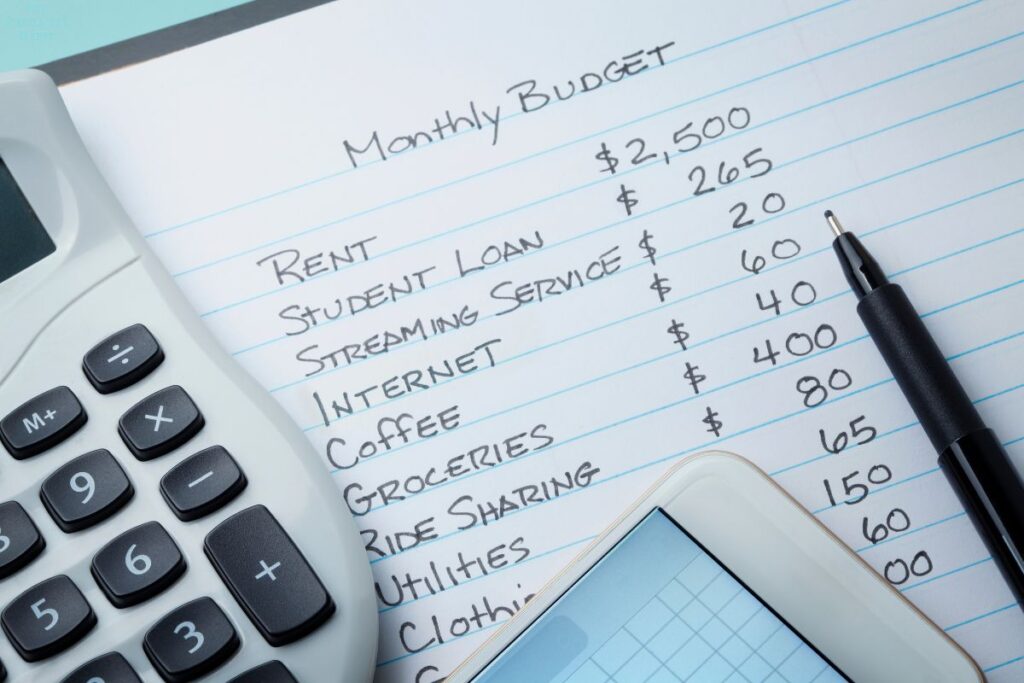Inside: Learn what the 50/30/20 money rule is and how you can use it to improve your finances.
When you’re trying to get a handle on your finances, the sheer number of budgeting methods, money-saving tips, and personal finance tools can feel overwhelming.
From detailed spreadsheets to fancy budgeting apps, it’s easy to feel like managing your money is more complicated than it needs to be. But the truth is, financial clarity doesn’t have to come with complexity.
Simple systems can make a big difference, which is where the 50/30/20 money rule comes in. This easy-to-follow budgeting framework offers a straightforward way to understand your spending and make intentional choices with your money.
Whether you’re just starting out with budgeting, trying to get out of debt, or looking to align your spending with your values, the 50/30/20 rule can help bring structure and peace of mind to your financial life.
In this article, we’ll break down exactly what the 50/30/20 money rule is, how it can improve your finances, who it’s best suited for, and practical steps to get started using it today.

What is the 50/30/20 Money Rule?
The 50/30/20 rule is a simple budgeting guideline that can help you divide your income into three spending categories:
50% for your needs
Half of your income should be dedicated to covering essential expenses – things you absolutely have to pay for in order to live and work. Separate out what your true needs are vs your wants.
These might include:
- Your rent or mortgage
- Utility bills – water, electricity, internet
- Groceries
- Transportation – fuel, registration, and maintenance for your vehicle
- Insurance – car insurance, homeowners or renters insurance, medical insurance
- Minimum payments for debt, like student loans or credit cards
- Basic healthcare costs
- Childcare, if you have children
The key here is to only include items that are truly essential. While things like dining out, Netflix subscriptions, and travel might feel essential, they aren’t absolutely necessary.

30% for your wants
Those subscriptions, plane tickets, takeout orders, and anything else that isn’t critical should fall under this part of your budget – the “wants.”
This is where your non-essential expenses should fall. Things like hobbies, gym memberships, streaming services, lattes from your local coffee shop, new clothes, and home decor belong in this category.
While it’s important to still be intentional with your spending, this budget gives you room to enjoy life while staying financially responsible.

20% for savings
The final 20% of your budget should be reserved for building your financial future.
This category includes your personal emergency fund, retirement accounts, investments, and savings for big goals, like a home or a new car.
Depending on the amount of debt you carry, this category can also be leveraged to pay down outstanding items – student loans, credit cards, and other obligations.
Debt often comes with high interest rates that accumulate the longer the debt is owed.
By prioritizing these items and putting extra funds toward eliminating them, you’ll be in a better position to save, invest, and ensure financial security for your future.

Why does the 50/30/20 money rule work?
One of the biggest benefits of the 50/30/20 rule is its simplicity.
Instead of tracking every single dollar spent on a complicated spreadsheet or trying to remember a dozen different budget categories, this method gives you a broad understanding of where your money is going – and helps you figure out where it should be going.
The distinction between needs, wants, and savings also works because it encourages balance. Ultra-strict budgets that allow no room for nice-to-haves are rarely successful in the long term.
Another benefit? The focus on putting 20% of your budget towards savings allows you to build financial resilience.
It isn’t just about surviving month to month – it’s about actively preparing for your future.

How to Use the 50/30/20 Rule to Improve Your Finances
If you’re ready to give the 50/30/20 rule a try, here’s a step-by-step guide you can follow to put it into action:
1 – Calculate your after-tax income.
You need to know your take-home pay in order to apply the rule successfully. Look at your income after taxes, health insurance premiums, and other deductions have been taken out.
If you’re a salaried employee (instead of hourly), check your pay stub to see your net pay.
If you’re self-employed or have variable income, use your average monthly earnings after estimating your taxes.
2 – Do the math.
Once you know your monthly take-home pay, divide it using the 50/30/20 formula. For example, if your take-home pay is $5,000, you’ll have $2,500 for needs, $1,500 for wants, and $1,000 to save.
This will give you a framework for how much you should be spending in each category.

3 – Track your current spending.
Once you know how your budget should theoretically be divided, track your actual expenses for a month and compare them to the 50/30/20 breakdown.
You might discover that your needs are taking up 60% of your income, not 50% – or your wants are closer to 40%. That’s ok – the goal here is awareness, not perfection.
4 – Adjust as needed.
If you find your spending isn’t in alignment with the 50/30/20 breakdown, look for opportunities to adjust.
Can you lower your grocery bill? Negotiate a better rate for internet service? Could you cut back on dining or cancel a subscription service you don’t actually use?
And you don’t have to give up everything fun. There are ways to save money while still enjoying life.
Remember – the 50/30/20 rule is a guide, not a rigid requirement. Depending on the cost of living in your area and your income, keeping your ‘needs’ at only 50% of your income may be virtually impossible.
The idea is to use it as a baseline and adjust as needed based on your income, location, and financial goals.

5 – Revisit your budget regularly.
As your personal situation and needs change, your budget should, too. Evaluate your spending breakdown every few months or after major life changes, like a new job or a big move.
Staying flexible will help you stick to the system long-term and will help keep you on track with your financial goals.
Final Thoughts on the 50/30/20 Money Rule
The 50/30/20 is a great general financial guideline to try and follow. There are a few alternative budget guidelines, such as the 60/30/10 or the 70/20/10 money rule.
Both of them follow the same framework of needs/wants/savings. Paying off debt and saving what you’re able to will give you more financial freedom.
However, there are seasons of life and times when expenses are higher than others. Using budgeting guidelines is about controlling what you can and making shifts as you’re able to improve your financial situation.
Want more money-saving tips? Check out these posts:
Have you tried the 50/30/20 rule, or do you use another method to budget your money? Share your experience in the comments!
Sign up on the form below to get weekly decluttering and simplifying inspiration sent straight to your inbox. You’ll also get the free 8 Quick Wins for Decluttering Worksheet to help you start to simplify your life today.

